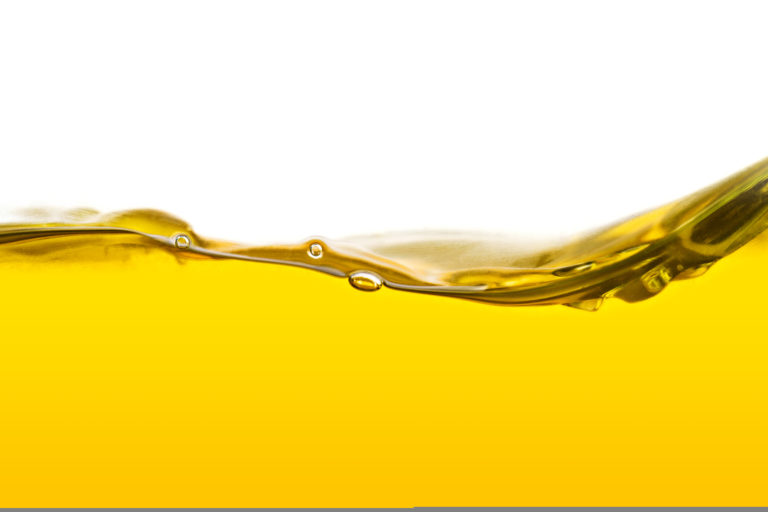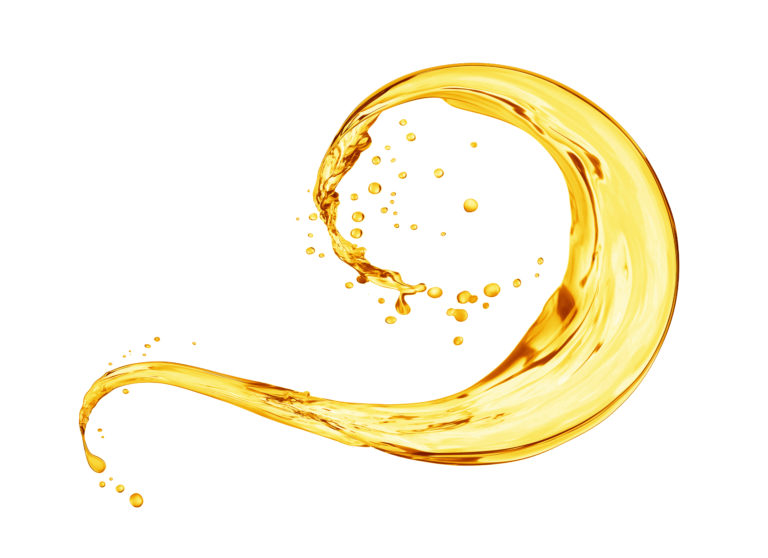
Oils
There are multiple reasons for using oil in a horse’s diet, but generally speaking, oils are fed to increase the energy in a horse’s diet to aid with weight gain; to provide added energy without fizz; or simply to help with coat condition.
Benefits of including oil
Horses utilise added oils well and studies show that oils added to the horse’s diet are around 76 to 94% digestible. Even without changing the total energy of the diet, having oils or fat in the ration has been shown to increase the amount of dietary energy available for growth, lactation and physical activity (Kane et al, 1979; McCann et al, 1987; Scott et al, 1993). Adding oils to the diet also helps to decrease total body heat production (beneficial for those working in hot climates), leaving more energy available for maintenance and production (Scott et al, 1993).
High-fat diets have been shown to enhance both aerobic activity (endurance activity) and anaerobic activity (sprint-type activity) and to help to delay fatigue. Research suggests that by providing oil in the diet which the horse can utilise when walking, trotting and even cantering (up to a heart rate of around 150 beats per minute), the stores of glycogen are spared so that when the horse starts to gallop he has a ‘full tank’ of fuel to use for high intensity work resulting, in effect, in improved stamina. It also seems that, because the horse is starting with a ‘full tank’ of glycogen, he doesn’t deplete energy stores completely, so recovers from an intense work period more quickly and can therefore perform more frequently.
Another added benefit of using oils is that they supply extra energy without increasing the NSC (non-structural carbohydrate) level (which includes sugars and starch – examples would include molasses and cereal grains) – of the diet. Too much NSC in the diet increases the risk of digestive disorders and high levels are often unsuitable for horses with veterinary issues or those who become ‘hot’ under saddle. Because oils provide on average two and a half times more digestible energy than an equal weight of cereal grain, a high energy diet can therefore be obtained by using oils without significantly changing the amount fed. This can help to keep meal sizes smaller, aiding with digestive health and preventing digestive disturbances

Oils are generally suitable for any horse. However, those with veterinary conditions such as laminitis, Cushing’s disease, insulin resistance, tying-up, gastric ulcers and even frequent colics, can benefit hugely from using oils within the diet. This is due to the fact that oils provide energy safely, which allows for a reduction in ingredients such as cereal grains and sugars, both of which can have harmful effects on horses with these conditions.
So which oil is best?
In terms of supplying energy, there is no real difference in the number of calories/energy different oils provide and therefore you could choose whichever is preferable. However, there are large variations in the amount of omega-3 and omega-6 essential fatty acids that exist within oils used for horses.
These essential fatty acids (EFA) are needed for various metabolic processes. The horse’s body does not produce EFAs, and thus these must be provided in the diet. Omega-6 and omega-3 have the greatest biological activity in the body, which is why more focus is placed on these two.
Essential fatty acids are of particular interest to researchers because of their effect on inflammation and immunity. Increased levels of essential fatty acids supplied in omega-3 oils may help to maintain pain-free, supple and mobile joints in horses and ponies. Benefits claimed of omega-3 oils also include:
- Helping horses’ joints and connective tissues heal and recover from the stress of exercise and thus aiding recovery after training and competition.
• Promoting a healthy, shiny and glossy coat.
• Promoting stronger and faster growing feet, which is useful for horses and ponies prone to laminitis; those with slow growing feet; or those difficult to keep shod.
• Boosting the immune system.
• Being good for the respiratory system.
• Helping to calm the temperament of excitable horses.
• Ensuring correct development of the nervous system, brain, muscles and skeleton.
• Maintaining and repairing cell walls.
• Providing general anti-inflammatory properties.
• Aiding wound healing.
• Supporting a healthy heart and blood circulation.
• Anti-allergic properties.
• Supporting a strong metabolism.
Studies have shown that higher levels of omega-6 can cause some horses to be less manageable, with increased anxiety and increased cribbing. They have also been implicated in contributing to some joint health problems and fertility issues (weak or insufficient sperm and a reliance on hormones for mares) among others. Despite this, omega-6 should not be avoided as it is essential in supporting some of the inflammation required to fight infection and heal tissues. It is also involved in hormone production, brain function and the regulation of blood pressure.
Oils containing higher levels of omega-3 are found in the natural diet of horses (forage) and can be digested easily. Omega-6 oils, however, are generally found in larger amounts in cereal grains. Horses fed large grain meals, thus, may have more omega-6 oils in their diet than omega-3 oils, while horses fed no grains may have more omega-3 than omega-6 oils so, as with all nutrients, finding the right balance is the key.
Research has shown that the correct ratio of omega-3 to omega-6 fatty acids is vital for the oils to work beneficially and therefore it is important that the correct combination is supplied in order to achieve the best results. Currently, no exact ratio has been established in horses, but given that omega-3 oils are more prevalent in the horse’s ‘natural diet’, it stands to reason that omega-6 oils should be provided at least 1:1 (omega-3: omega-6) with most suggesting rather 1:2 (omega-6: omega-3). With this in mind the figures below indicate the type of oils that are recommended for providing more omega-3 than 6.

How do I keep the correct balance of omegas?
One of the best means of ensuring a good balance of omegas is to increase forage and decrease concentrates as much as possible while maintaining a healthy weight. With regards to concentrate, you need to select a quality, complete feed that promises an improved omega balance. It may still be weighted toward a higher omega-6 profile, but ensuring the product still includes omega-3 is always beneficial.
It is also a good idea to choose concentrates that contain antioxidants such as vitamins C and E and minerals like selenium and zinc, when feeding oil. During aerobic respiration which breaks down oil, free radicals are produced which, if not countered with antioxidants, can damage cell membranes including those of the muscles. While the body produces its own internal antioxidants, these may be insufficient to deal with the additional free radicals produced by an increased inclusion of oil in the diet. Studies have shown that horses receiving oil will need additional vitamin E at a rate of 1IU per millilitre (so if you feed 300ml of oil your horse will need 300IU of vitamin E extra in the diet) and thus you may need to look at your dietary levels to ensure enough is provided, or look at including an additional vitamin E supplement (Marlin, 2017). This calculation can be a little complex and thus it is worthwhile contacting a nutritional consultant to help you with this before commencing.
How much oil should I feed?
The amount required depends largely on the reason for which it is being fed. Adding coat shine generally requires only a small amount of oil, such as 80 to 120ml per day. However, if extra energy is required, 150 to 400ml may be needed. Up to 100ml per 100kg of body weight of oil per day can be fed, but this depends largely on the horse and how well he adapts to oil supplementation. The average horse will not need this maximal amount.
When selecting oils, do note that palatability may play a role. If you are simply using for coat shine any of the recommend oils could be used as it is required in smaller amounts. However, if you are using for energy you may want to select something with a more neutral palatability. For example, some horses may not be happy to eat 250ml of fish oil, and thus linseed may be better.
How do I introduce oils?
As with all new feed additions, horses should be slowly introduced to the added oil. Start with a small amount of about 20 to 60ml, increasing this amount by 20 to 40ml each week until the desired level is found. This may seem slow, but this allows for the horse’s digestive system to adapt to the fat which will reduce the likelihood of soft manure; a typical, though usually transient, effect of using oil.
It is important to note that complete metabolic adaptation to a high-fat diet has been shown to be achieved in 11 weeks, but not in six weeks (Custalow et al, 1993). Keep in mind, therefore, that it will take six to 12 weeks before all the positive benefits of using high omega-3 containing oils become apparent.

REFERENCES:
http://www.baileyshorsefeeds.co.uk/feedingexplained/browsearticles:376.htm;
http://www.equinews.com/article/omega-3-and-6-fatty-acids-horses-there-ideal-ratio
www.davidmarlin.co.uk/portfolio/oil-fired-up-the-value-of-feeding-oil-to-horses-and-how-to-choose-which-oil-is-best/
